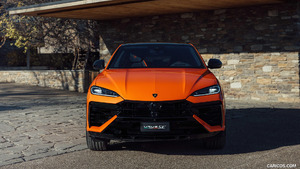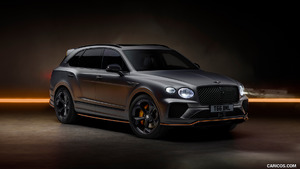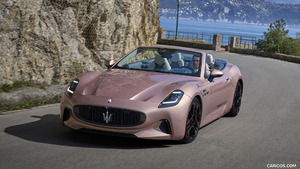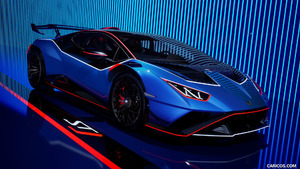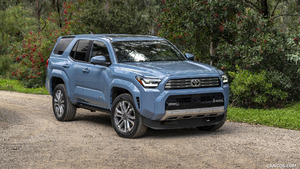Audi Urban Concept
Audi is breaking new ground: The Audi urban concept technology study is a 1+1 vehicle for urban and metropolitan areas. The electric powered show car has four wheels, but does not fit into any current automobile category. Weighing just 480 kilograms (1,058.22 lb), the Audi urban concept combines elements of a racecar, a roadster, a fun car and a city car into a radical new concept. It has the potential to become the trendsetter for a new form of mobility.
Concept
“How much car is necessary to deliver driving pleasure and urban mobility in an entirely new way?” This question was the starting point for the Audi urban concept. A model of a sailplane was in the studio during the development process as an example of lightweight construction, efficiency and reduction – of the principle of “less is more.”
The result is a vehicle that cannot be pigeonholed, a vehicle that redefines the term “driving pleasure” and is completely unencumbered by the baggage of conventional concepts. The Audi urban concept concentrates on the pure essence of driving and conveys freedom at the premium level. At the same time, it offers the comfort and safety of a closed automobile, making it far superior to any motor scooter. With its sleek body and free-standing wheels, the technology study is progressive and highly dramatic while at the same time extremely sporty, yet surprisingly comfortable.
The cabin of the Audi urban concept offers slightly offset seating for two. The roof slides back for entry. This innovative solution makes the Audi urban concept even more fun to drive because the canopy can remain open in good weather. It also allows the cabin to be aired out very quickly. The fit and finish of the show car is characterized by the obligatory Audi perfection. The car’s technology is reflective of the brand’s wide-ranging competence, particularly in ultra-lightweight construction.
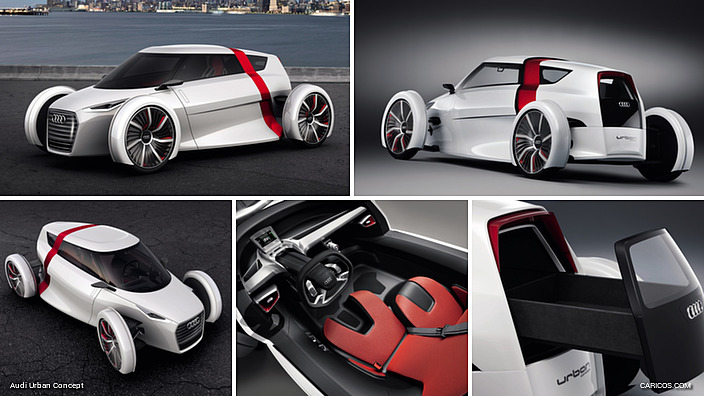 2011 Audi Urban Concept
2011 Audi Urban Concept
The brand with the four rings has created an entirely new class of vehicle with the Audi urban concept, and that on the premium level. It also marks the new entry point to Audi’s future range of electric vehicles, which is crowned by the R8 e-tron high-performance sports car. The Audi urban concept quite literally makes it easy to get into electric mobility.
The technology study is targeted toward people who are interested in technology and are enthusiastic about new approaches to mobility, independent of their age and status. In particular, it addresses an urban public whose lifestyle both reflects the car’s modern concept and the driving pleasure associated with it and is a good fit for a possible innovative leasing system.
Exterior design
The Audi urban concept features an all-new design that still has certain historical roots in the Auto Union racecars of the 1930s. They were well ahead of their time conceptually: they were extremely lightweight and their engines were mounted in the rear. Their large, open wheels also stood out from the chassis – another parallel with the modern show car.
Painted in Electric White, pearl effect, today’s technology study – 3,219 millimeters (126.73 in) long, 1,678 millimeters (66.06 in) wide, but just 1,189 millimeters (46.81 in) high – has a body on which all the lines are surging forward. The greenhouse is extremely flat. The roofline drops down like a wedge while the side window rises upward. The typical Audi tornado line gives the urban concept a strong shoulder.
An upright, forward-leaning blade in front of the rear wheel accentuates the side view. The Speed Red contour gives the appearance of a roll bar and evokes the Audi R8 high-performance sports car. The flanks of the body flare outward toward the bottom to enlarge the floor. This serves two purposes: It generates downforce at higher speeds and it can be used to charge the battery via induction – a particularly convenient method.
The characteristic Audi single-frame grill, which sports the four rings, appears as a closed surface on the Audi urban concept. It tilts forward to provide access to the charging socket. The narrow LED headlights project three-dimensionally from the body.
The turn signals are LED strips running along the fenders. These closely encircle the free-standing wheels, and the front fenders turn with the wheels when steering. The three-dimensional rear lights with the tail light and brake light are integrated into the vehicle body and wrap around the top of the rear window. At the back of the car is a small luggage compartment that pulls out like a drawer. The front segment of the greenhouse is movable – another innovative idea that is unique to the Audi urban concept. Mounted on rails, it can be slid back by hand over the fixed rear segment.
It is up to the driver to decide whether to close the canopy or leave it open. The technology study is a roadster-on-demand that has neither roll-down windows nor a heavy air conditioner. When closed, the canopy provides protection against rain and cool air. Audi has also developed a second body variant as an alternative to the urban concept: a Spyder with a flat window strip wrapping around the cockpit and doors that open upward at an angle.
Interior
Entry to the Audi urban concept is via the slide-back canopy. The driver and passenger step over the edge of the vehicle as if they were stepping into the bathtub – there are no doors. This does not require any great flexibility; a handle on the windshield frame and special cutouts on the seating surfaces facilitate entry.
The show car offers room for two. The driver and passenger sit next to one another, with the right seat offset by 30 centimeters (11.81 in) to the rear to provide sufficient shoulder and elbow room. The seats are fixed, integral components of the monocoque, which provides for significant weight savings. They are covered with foam seating surfaces custom-fabricated to the measurements of the customer, just like in a racecar. The seat belts run through cutouts in the seat backs.
Sitting in the Audi urban concept is somewhat like sitting in an airplane cockpit. The seating position is very sporty. The driver can precisely adjust the positions of the aluminum pedals and the steering column. Both components are telescoping. The pedals can be moved a total of 22 centimeters (8.66 in), while the steering column can be moved 14 centimeters (5.51 in) for easier entry and additional 6 centimeters (2.36 in) for a custom driving position.
The steering column is exposed – a thick, elegantly designed section, open in the center and mounted virtually horizontally. At the far end of the steering column is a display for the most important information. The small, hexagonal steering wheel includes buttons and roller switches for controlling various systems, including selecting the Audi drive select modes for the electric drive system.
The entire interior of the technology study is subjugated to the strict dictates of ultra-lightweight construction. Running below the windshield across the entire cabin is a wing-shaped section that is also open in the middle. This new style of dashboard includes satellite controls for the heater and two large air vents.
Rather than carpeting, an innovative mat covers parts of the floor. This is made from a technical textile originally developed for athletic shoes that is water repellant and very durable. The seats are covered with cloth, with the edges of the foam pads framed in kangaroo leather. Aluminum applications accentuate the dashboard.
Technology
The Audi urban concept is also without peer with respect to the technical concept. The outer skin of the show car is made of carbon fiber-reinforced polymer (CFRP); the occupant cell is a mix of CFRP monocoque and an aluminum structure. This ultra-lightweight construction is the foundation for the technology study’s extremely low curb weight of just 480 kilograms (1,058.22 lb).
The sophisticated chassis underscores the distinctively sporty personality of the Audi urban concept. Wishbones made from a combination of aluminum and CFRP locate the free-standing, 21-inch wheels.
Manufactured using cladding technology, the wheels are very light and feature a variant of the blade design from the Audi e-tron models. The tire sizes are as unusual as the car as a whole – 125/60 up front and 145/50 in the rear.
The Audi urban concept uses pushrod technology borrowed from motorsports. As in a racecar, the struts mounted in the interior of the monocoque are nearly horizontal. Four disc brakes provide the stopping power. The turning circle measures less than nine meters (29.53 ft) – ideal for a city car. Thanks to the vehicle’s low weight, the rack-and-pinion steering does not require any power assistance. Crumple zones in the front and rear plus two airbags provide for a high degree of passive safety. An innovative assistance system helps the driver to avoid collisions with pedestrians.
The battery is mounted transversely behind the seats. The lithium-ion battery, which weighs around 90 kilograms (198.42 lb), stores 7.1 kWh of usable energy. The study’s two electric motors together produce 15 kW (20 hp) of continuous power and 47 Nm (34.67 lb-ft) of torque. The motors are mounted between the rear wheels, which they drive via a single-speed transmission.
The Audi urban concept accelerates from 0 to 100 km/h (62.14 mph) in 16.9 seconds. It reaches 60 km/h (37.28 mph) in around six seconds. The show car steps off from traffic lights smartly thanks to the torque of the electric motors, which is fully available from standstill. Top speed is governed at 100 km/h (62.14 mph).
The action radius in the European driving cycle is 73 km (45.36 miles). The battery recharges completely in about 20 minutes with 400 volt three-phase current, and in approximately one hour with 230 volt household current.
Audi Wireless Charging
Audi is hard at work on the future of charging technology as an alternative to the charging at a power outlet. Audi Wireless Charging (AWC) refers to contactless induction charging. The infrastructure side, comprising a coil and an inverter (AC/AC converter), is placed on the normal parking spot of the Audi urban concept and connected to the power grid. The 3.6 kW primary coil set into the plate generates a high-frequency alternating field.
The charging process begins automatically when the urban concept drives onto the plate. The alternating magnetic field of the infrastructure side induces an alternating current across the air gap in the secondary coil, which is integrated into the vehicle. This current is rectified and fed into the vehicle’s electrical system, where it charges the battery or powers consumers such as the heater. The alternating field is only generated if the vehicle is standing over the plate and thus poses no danger to people or animals.
Charging stops automatically when the battery is fully charged. The driver can interrupt charging at any time. The efficiency of AWC is comparable to that of other charging technologies. It is not affected by rain, snow or ice. The new technology makes charging electric vehicles easy and extremely convenient. A later version of the technology will be able to be integrated into the transportation infrastructure as a retrofit for parking garages or residential streets, for example.








